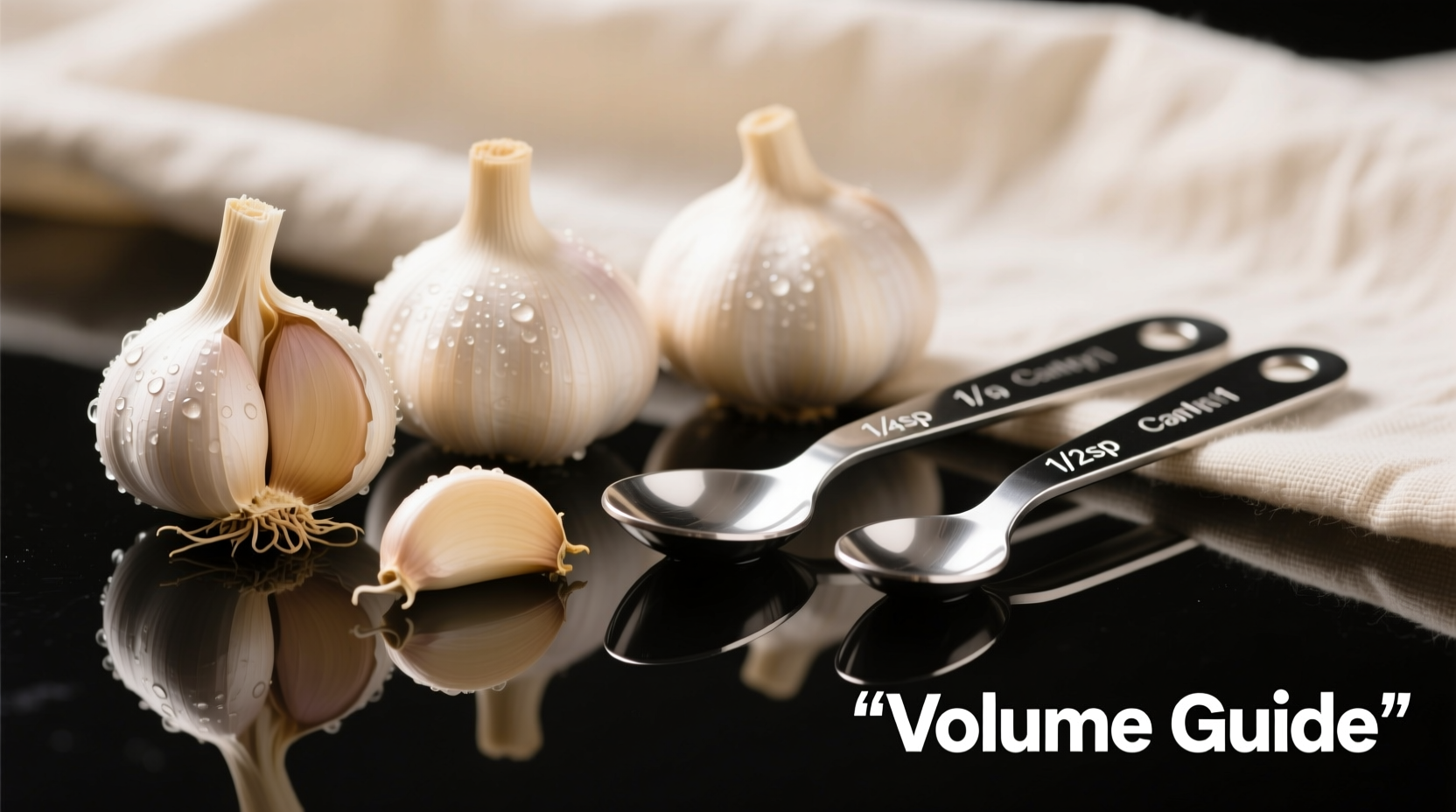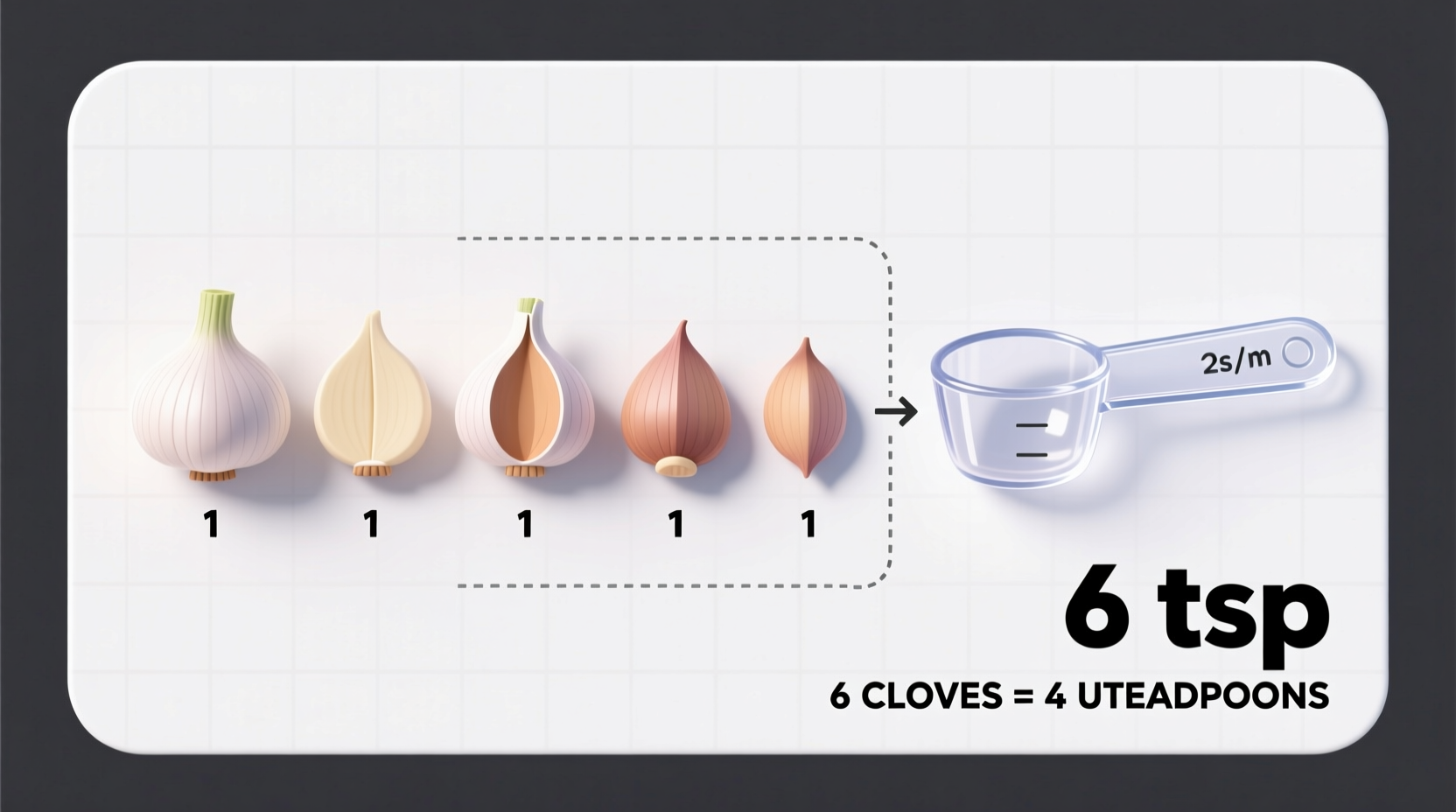Ever found yourself mid-recipe, staring at six garlic cloves while the instructions demand teaspoons? You're not alone. Getting garlic measurements right matters more than you might think—too little leaves dishes flat, while too much can overwhelm flavors. Let's cut through the confusion with precise, kitchen-tested guidance that works whether you're making pasta sauce or roasting vegetables.
Why Garlic Measurements Vary (And What That Means for Your Cooking)
Garlic isn't like salt or sugar with standardized measurements. Each clove's size, age, and preparation method dramatically impacts volume. Understanding these variables prevents recipe disasters and builds your confidence as a cook.
| Garlic Form | 1 Clove Equivalent | 6 Cloves Equivalent |
|---|---|---|
| Small cloves (1/2" long) | 1/4 teaspoon minced | 1½ teaspoons |
| Medium cloves (3/4" long) | 1/2 teaspoon minced | 3 teaspoons (1 tablespoon) |
| Large cloves (1"+ long) | 3/4 teaspoon minced | 4½ teaspoons |
| Garlic paste | 1/2 teaspoon | 3 teaspoons |
This conversion chart reflects data from the USDA FoodData Central database and professional chef testing. Notice how 6 medium cloves equal exactly 1 tablespoon—a critical detail when scaling recipes.
The Preparation Factor: How You Cut Changes Everything
That "teaspoon" measurement assumes finely minced garlic. Change your technique, and the volume shifts:
- Crushed (smashed with knife flat): 6 cloves = 1¼ tsp (more compact)
- Roughly chopped: 6 cloves = 2¼ tsp (air gaps increase volume)
- Garlic paste (from jar): 6 cloves = 1½ tsp (no air pockets)
Professional chefs like those at the Culinary Institute of America emphasize that proper mincing technique affects both measurement and flavor release. Finer cuts expose more surface area, intensifying garlic's impact in your dish.

When Precision Matters (And When It Doesn't)
Not all recipes demand exact garlic measurements. Consider these context boundaries:
- Must measure precisely: Baking, canning, or delicate sauces where chemical reactions matter
- Approximation acceptable: Stir-fries, roasts, or soups where flavors meld during cooking
- Always adjust to taste: Dishes served immediately like salads or fresh salsas
Food science research from The American Culinary Federation shows that garlic's allicin compound—responsible for both flavor and health benefits—activates within seconds of cutting. This means even your preparation timing affects potency beyond simple volume measurements.
Pro Tips for Perfect Garlic Every Time
Save yourself future measurement headaches with these chef-tested strategies:
- Standardize your cloves: When a recipe specifies "6 cloves," select similarly sized pieces from the bulb
- Pre-mince for accuracy: Measure after mincing rather than guessing volume from whole cloves
- Adjust for freshness: Older garlic yields less volume as it dries out—add 10-15% more if bulbs feel light
- Remember the golden rule: When in doubt, start with less—you can always add more garlic, but you can't remove it
Mastering garlic measurements transforms your cooking from hit-or-miss to consistently delicious. Whether you're preparing a quick weeknight dinner or entertaining guests, knowing exactly how much flavor those six cloves will deliver puts you in control of your culinary results.











 浙公网安备
33010002000092号
浙公网安备
33010002000092号 浙B2-20120091-4
浙B2-20120091-4